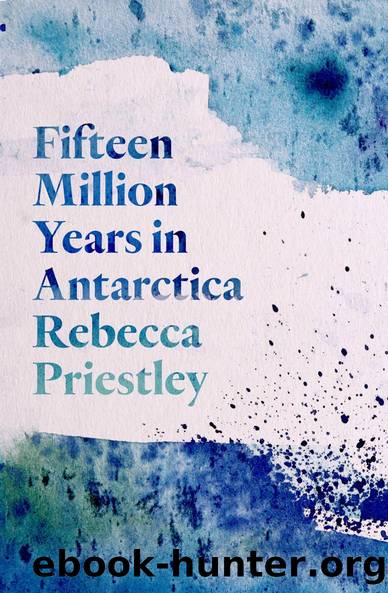Fifteen Million Years in Antarctica by Rebecca Priestley

Author:Rebecca Priestley [Priestley, Rebecca]
Language: eng
Format: epub
Tags: Biography & Autobiography, Personal Memoirs, Science, History
ISBN: 9781776562244
Google: 5YFqxgEACAAJ
Publisher: Victoria University of Wellington Press
Published: 2019-09-15T02:44:54+00:00
The sinking shores of South Dunedin
In June, after the CT scanning of the sediment core, Tim, Richard and I flew south to an Antarctic science conference in Dunedin.
A city councillor opened the conference. âThe planet stands at a crossroads,â he said. âUnderstanding whatâs happening in Antarctica is key to knowing whatâs happening in a changing climate.â The conference featured the range of Antarctic research taking place in New Zealand and included presentations from geologists, microbiologists, zoologists, physicists, policy experts and more. But climate change was a pervading issue across the entire conference. As well as papers on the past and current behaviour of the Antarctic ice sheets, glaciers, ice shelves and the annual sea ice, there were papers on how ocean acidification impacts on marine species, New Zealandersâ adaptation to climate change, and communicating about climate change through art and school curricula.
Richard and I were there to give keynote lectures. Richard gave a paper on Antarctic ice-sheet sensitivity and I talked about public engagement with Antarctic science, though in todayâs post-truth world of fake news and click-bait it was difficult for me to find a positive message to share.
On our third day in Dunedin, we drove out to South Dunedin. A 2015 report on sea-level rise by the Parliamentary Commissioner for the Environment identified South Dunedin as the most at-risk urban area in New Zealand. As we drove along Bay View Road, Richard said, âThis will all be under-water with half a metre of sea-level rise.â
We drove up onto the hills south of the beach and looked down over South Dunedin. At the east coast was the wide sweep of St Clair Beach, known for its great surf and the occasional great white shark attack. Big waves were coming in, line after line of breakers surging towards the coast. Back from the shore was a line of old sand dunes, now obscured by grand homes and gardens, then rows of suburban streets. I had thought that working out the impact of 0.5 metres sea-level riseâthe minimum amount predicted by 2100âwould loosely involve drawing a contour line along the half-a-metre mark, but these guys said it was more complex than that. In the short term, they said, a higher sea level will mean a rise in the water table and ground saturation. âAny time you get a big flood or rainfall youâll get lots of surface flooding.â
A block back from the beach, in the middle of the South Dunedin isthmus, was the Forbury Park Raceway. From this distance it was just a flat expanse of grass a few blocks in size, but we could see puddles of water across the park. It was a cold dayâit had been below freezing that morningâbut it hadnât been raining.
Groundwater inundation will make this whole area soggy, said Richard, pointing to the park. The stormwater drains would become waterlogged and any time it rained it would flood. âYouâd be turning South Dunedin into a wetland. It would be like living in a swamp. No more high heels for you, Tim, youâd have to wear your Red Bands all the time.
Download
This site does not store any files on its server. We only index and link to content provided by other sites. Please contact the content providers to delete copyright contents if any and email us, we'll remove relevant links or contents immediately.
Still Foolin’ ’Em by Billy Crystal(36211)
We're Going to Need More Wine by Gabrielle Union(18911)
Plagued by Fire by Paul Hendrickson(17298)
Pimp by Iceberg Slim(14234)
Molly's Game by Molly Bloom(14030)
Becoming by Michelle Obama(9896)
When Breath Becomes Air by Paul Kalanithi(8272)
Educated by Tara Westover(7888)
The Girl Without a Voice by Casey Watson(7781)
Note to Self by Connor Franta(7592)
The Incest Diary by Anonymous(7518)
How to Be a Bawse: A Guide to Conquering Life by Lilly Singh(7349)
The Space Between by Michelle L. Teichman(6818)
What Does This Button Do? by Bruce Dickinson(6107)
Imperfect by Sanjay Manjrekar(5750)
Permanent Record by Edward Snowden(5688)
A Year in the Merde by Stephen Clarke(5270)
Shoe Dog by Phil Knight(5085)
Promise Me, Dad by Joe Biden(5041)
